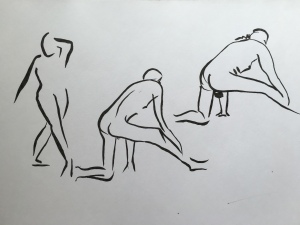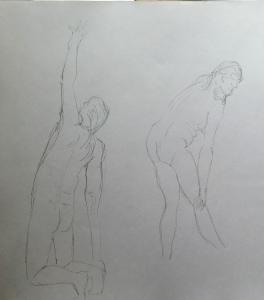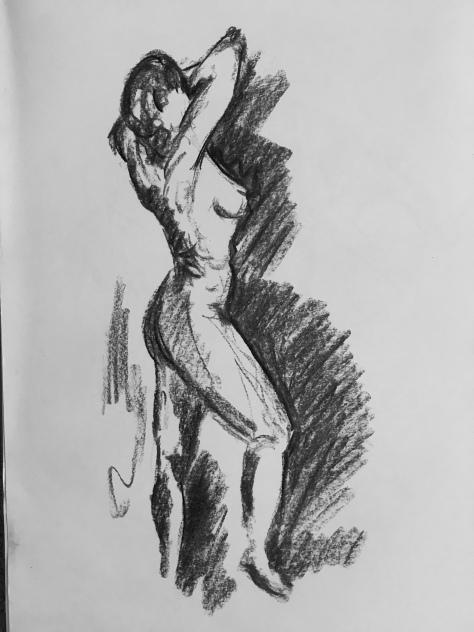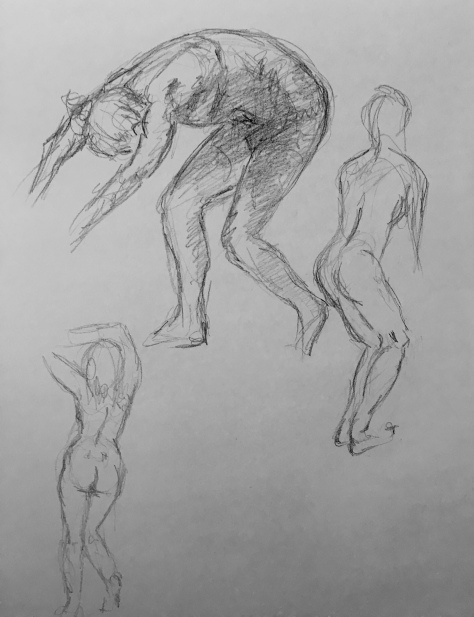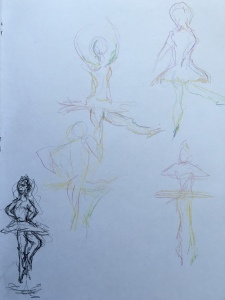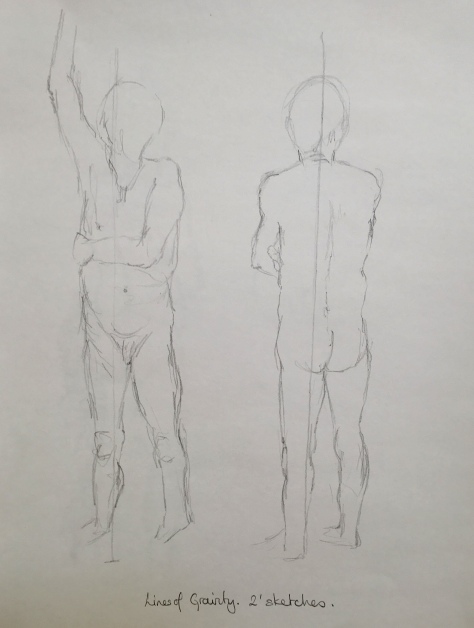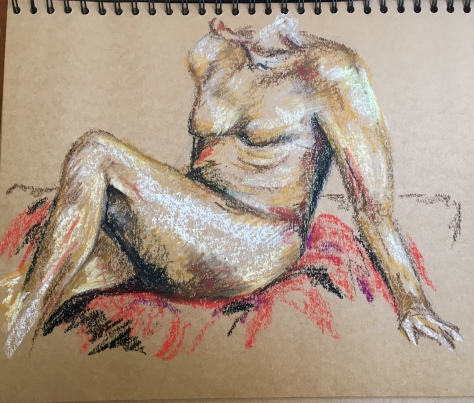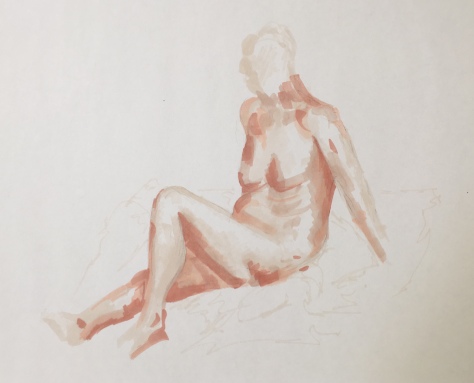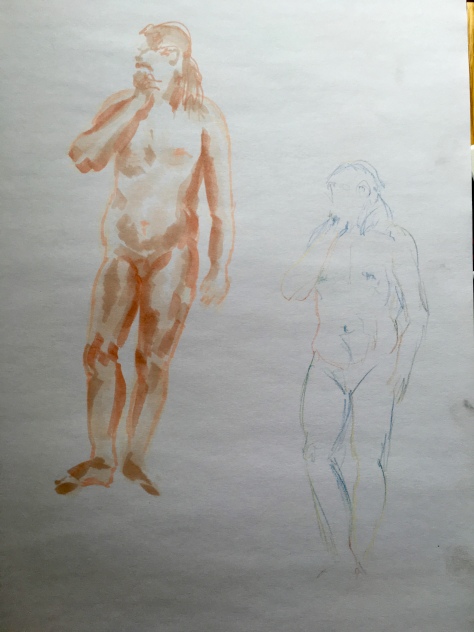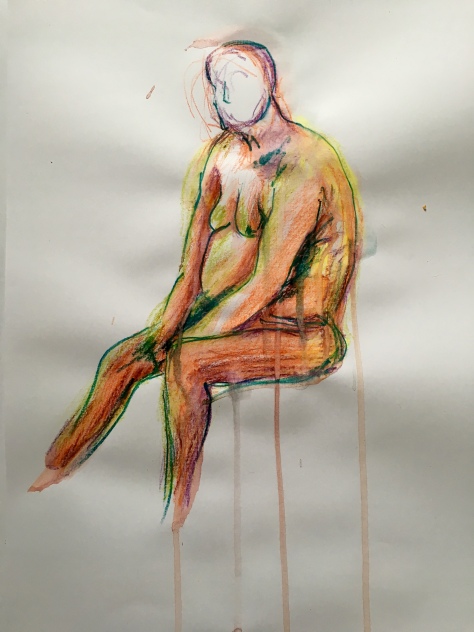Ask your model to adopt a ‘dynamic’ position – lifting an arm, twisting the hips, turning the head, stretching the arms or walking. They’ll need to be able to hold the pose for about five minutes.
Work on sheets of A3 paper and, using charcoal, brush pens or other tools that allow for broad and sweeping marks, quickly sketch the figure. Try to convey the sense of energy in each pose. Don’t worry about details – concentrate on the sense of movement in the figure. Rapidly drawn, flowing, undulating lines can create the effect of movement. Lines repeated and close give the impression of movement.
These sketches use a brush pen in an attempt to convey energy, but as a first go I felt these were rather constrained. They work in that they don’t labour over detail and just use rapid sweeping marks to convey form, but they’re a little too “exact” that renders them rather static.
These sketches use pencil to again attempt to convert energy. The pencil marks are less exact but they are still rather static. In part I think this might be due to the pose, but they also focus a little too much on detail (in spite of trying not to) and again appear rather constrained as a result.
For this pose I switched to charcoal, which I found much easier to approach with flowing, energetic lines. I am pleased that I have captured a sense of movement, a moment in time, whilst not labouring over detail. Form and shape is implied by shading and undulating marks placed to enhance the sense of the musculature and skeletal form beneath the skin.
Again, using charcoal these sketches capture the models’ poses without labouring detail. I have not added much shading so the drawings are mainly contour lines. The left pose is rather awkward but does capture the position of the model (knock-kneed and tilted to one side)
In this charcoal drawing I added more shading to give a sense of form, but tried to simultaneously ignore detail. I am pleased with the sense of 3D form that resulted.
In these quick sketches I resorted to graphite pencil and the resulting drawings tightened up a little again. However, I enjoy the process of creating a sense of form using sketchy lines and I feel free from the need to get it correct first time. The multiple lines in some areas add to the sense of movement/ transience of the model’s pose.
I tried using different colour brush pens to create a sense of movement- the yellow pose works quite well I think, but the other two were both out of proportion and/or more constrained. the lines were more laboured and tighter, while the yellow lines are more free and less laboured.
The following sketches were all done on a smaller scale in my sketch books. I particularly like the first one of the reclining male nude and wish I had done this in a larger format. In these first two drawings I was trying to experiment with fluidity of line and gestural marks to describe essentially static poses. I thought they were, on the whole, relatively successful. 
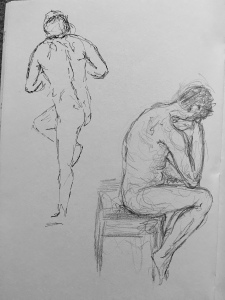
The drawings below were trying to capture more of a sense of movement. I had to work quickly and without worrying too much about being absolutely accurate- the repeated marks, the poses and their loose style give a sense of flow and movement within the subjects.

